In today’s competitive business landscape, generating high-quality leads is crucial for growth and success. We will explore how a well-planned content marketing strategy can help businesses attract and convert qualified prospects.
A robust content marketing approach enables companies to engage, educate, and inform their target audience, driving measurable results. With 70% of B2B marketers reporting lead generation from content, it’s clear that this tactic is a game-changer.
By leveraging expert content marketing lead generation techniques, businesses can reduce costs and increase conversions. We will break down the essential components of a successful lead generation strategy, providing actionable frameworks for creating effective content.
Key Takeaways
- Understand the fundamentals of content marketing lead generation
- Discover how to create content that resonates with your target audience
- Learn how to implement advanced techniques that drive measurable results
- Develop a clear roadmap for generating high-quality leads
- Reduce costs and increase conversions with expert content marketing techniques
Understanding Content Marketing for Lead Generation
In the modern business landscape, understanding content marketing for lead generation is vital. As B2B sales cycles continue to lengthen, with over 30% taking one to three months to close, the importance of capturing potential customers’ information early on cannot be overstated.

Capturing a potential customer’s information at the beginning of the sales cycle allows businesses to influence the purchasing decision. This is where content marketing plays a crucial role. By providing valuable information, businesses can build trust with their target audience, making them more receptive to the solution being offered.
What is Content Marketing Lead Generation?
Content marketing lead generation refers to the process of creating and distributing valuable, relevant, and consistent content to attract and retain a clearly defined audience — and, ultimately, to drive profitable customer action. It’s about providing the right content at the right time to guide potential customers through the sales funnel.
Why Content Marketing is Essential for Lead Generation
Content marketing has become indispensable for lead generation because it aligns perfectly with how modern buyers research and make purchasing decisions. Today’s consumers actively avoid traditional advertising, with 70% preferring to learn about companies through articles rather than advertisements. By leveraging content marketing, businesses can create a sustainable lead generation engine that continues working long after publication.
Some key reasons why content marketing is essential include its ability to build trust gradually, provide multiple touchpoints to nurture leads, and offer a cost-effective method of lead generation compared to traditional methods. As we move forward, it’s clear that content marketing will continue to play a vital role in lead generation strategies.
The Content Marketing Lead Generation Funnel
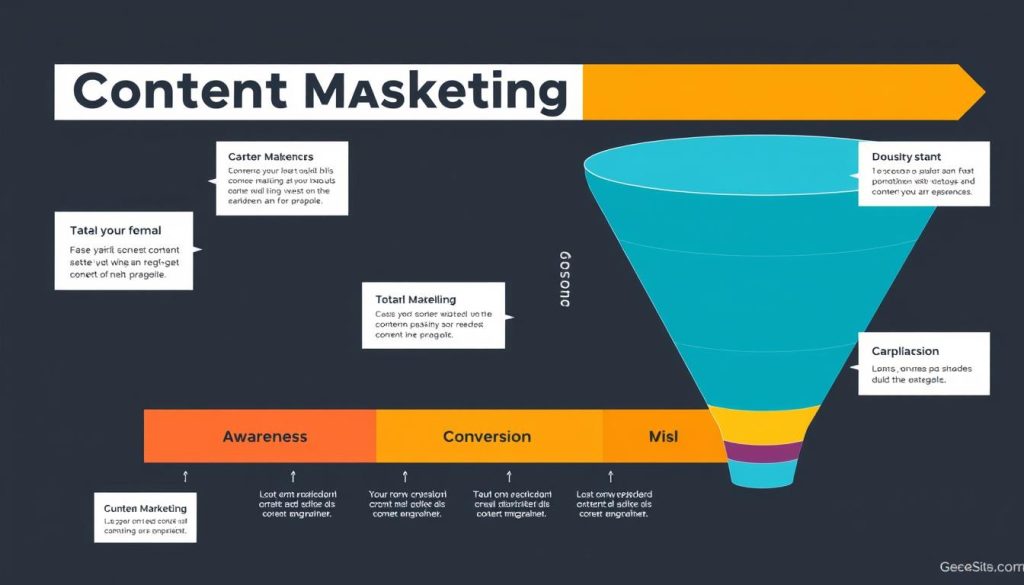
A well-structured content marketing funnel is the backbone of any successful lead generation strategy. It guides potential customers through a journey, from initial awareness to conversion.
Top of the Funnel (TOFU) Content
At the top of the funnel, the focus is on creating awareness and attracting potential leads. TOFU content should be informative, engaging, and relevant to the target audience’s needs and interests. This can include blog posts, social media content, and educational resources that address the audience’s pain points.
Middle of the Funnel (MOFU) Content
As leads move into the middle of the funnel, they are nurtured through more in-depth content that builds trust and establishes your brand as a thought leader. MOFU content may include eBooks, whitepapers, webinars, and case studies that provide valuable insights and solutions.
Bottom of the Funnel (BOFU) Content
At the bottom of the funnel, leads are ready to make a purchasing decision. BOFU content is designed to convert these leads into customers by addressing any final objections and showcasing the value of your product or service. Effective BOFU content includes case studies, comparisons, FAQs, demos, and customer testimonials that directly demonstrate your solution’s benefits and value proposition.
The types of content used at each stage of the funnel are tailored to the lead’s journey, from building awareness and trust to converting prospects into customers. By understanding and leveraging the content marketing funnel, businesses can create a strategic approach to lead generation that drives results.
Developing Your Lead Generation Strategy
Crafting a lead generation strategy is crucial for businesses aiming to thrive in today’s competitive landscape. A well-designed strategy enables businesses to attract potential customers and guide them through the sales funnel effectively.
Setting SMART Goals for Lead Generation
To develop a successful lead generation strategy, we must start by setting SMART (Specific, Measurable, Achievable, Relevant, Time-bound) goals. This framework ensures that our objectives are clear and aligned with our overall business strategy. For instance, instead of aiming to “increase leads,” a SMART goal would be to “increase qualified leads by 20% within the next 6 months through targeted content marketing campaigns.” By setting such goals, we can focus our efforts and measure the effectiveness of our strategy.
Identifying Your Target Audience
Next, we need to identify our target audience to create content that resonates with them. The best way to do this is by developing detailed buyer personas. These semi-fictional profiles of our ideal customers help us understand their challenges, goals, and decision-making factors. By combining quantitative data (demographics, job titles, company size) with qualitative insights (pain points, objections, priorities), we can create a comprehensive picture of our audience.
Understanding our audience goes beyond basic demographics. It involves recognizing their specific needs and preferred content formats. For example, some may prefer in-depth ebooks and whitepapers, while others might engage more with webinars or video content. By tailoring our content strategy to address these needs, we can increase engagement and conversion rates.
| Audience Characteristics | Content Preferences | Marketing Strategies |
|---|---|---|
| Demographics: Age, Job Title, Company Size | Ebooks, Whitepapers, Blog Posts | Email Marketing, Social Media |
| Qualitative Insights: Pain Points, Objections, Priorities | Webinars, Video Content, Case Studies | Content Personalization, Account-Based Marketing |
| Industry Context, Buying Process, Decision-Making Criteria | Templates, Tools, Success Stories | SEO Strategies, Paid Promotion |
Creating High-Quality Content That Generates Leads
High-quality content is the cornerstone of any successful lead generation strategy, enabling businesses to capture and engage their audience effectively. With approximately 3.75 billion web pages indexed, the competition for attention is fierce. To stand out, we need to prioritize creating content that not only resonates with our target audience but also drives conversions.
Understanding Search Intent
Understanding search intent is crucial for creating content that meets the needs of our audience. It’s about recognizing what our potential leads are searching for and why. By aligning our content with their intent, we can increase the likelihood of our content being discovered and engaged with. This involves using relevant keywords and phrases that our audience uses when searching for solutions or information related to our offerings.
To effectively understand search intent, we must consider the different stages of the buyer’s journey. At each stage, our audience has different needs and questions. By tailoring our content to address these specific needs, we can guide our leads through the sales funnel more effectively.
Keyword Research for Lead Generation Content
Keyword research is a foundational element of creating content that generates leads. It involves identifying the terms and phrases our target audience uses when searching for information related to our products or services. By incorporating these keywords into our content, we can improve our visibility in search engine results, driving more qualified traffic to our site.
Effective keyword research also involves understanding the intent behind the keywords. This means looking beyond just the keywords themselves and considering what our audience is trying to achieve or learn. By doing so, we can create content that not only attracts traffic but also resonates with our audience, increasing the likelihood of conversion.
| Keyword Type | Description | Example |
|---|---|---|
| Informational | Keywords used when seeking information | “How to improve lead generation” |
| Transactional | Keywords used when ready to make a purchase | “Buy lead generation software” |
| Navigation | Keywords used to find a specific website or page | “Lead generation tools” |
Content Quality Factors That Drive Conversions
High-quality content that drives conversions goes beyond just being well-written. It must strategically address the specific needs of our audience while guiding them toward a solution. Factors such as credibility, visual elements, and content structure play a significant role in enhancing the conversion potential of our content.
For instance, incorporating original research, expert quotes, and data-backed claims can significantly increase credibility and trust with our audience. Visual elements like custom graphics, charts, and videos not only improve engagement but also help communicate complex value propositions more effectively.
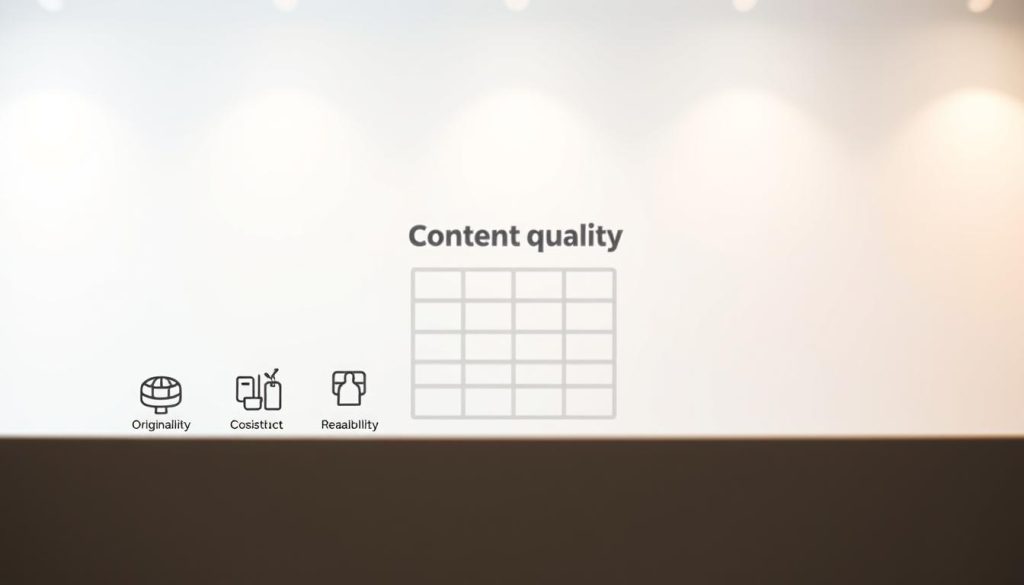
By focusing on these quality factors and understanding the intent behind our audience’s searches, we can create a content strategy that not only attracts traffic but also drives meaningful conversions.
Types of Content for Effective Lead Generation
The key to successful lead generation lies in producing and disseminating the right types of content that add value to your prospects. By diversifying your content strategy, you can effectively capture and nurture leads throughout their buyer’s journey.

Blog Posts and Articles
Blog posts and articles remain a cornerstone of lead generation strategies, offering a platform to share insights, industry trends, and thought leadership. They help establish your brand as a trusted authority in your niche.
Ebooks and Whitepapers
Ebooks and whitepapers provide in-depth analysis and comprehensive information on specific topics, showcasing your expertise and offering substantial value to potential leads. They are particularly effective for B2B lead generation.
Case Studies and Success Stories
Case studies and success stories serve as powerful testimonials, demonstrating the real-world impact of your products or services. They build credibility and trust with potential leads by showcasing tangible results.
Webinars and Video Content
Webinars and video content offer engaging, interactive ways to connect with your audience, share knowledge, and showcase your brand’s personality. They can be particularly effective for complex products or services that require detailed explanations.
Templates and Tools
Providing handy tools and templates is a great way to make your audience’s lives easier, positioning your brand as a helpful resource. Interactive tools like checklists, calculators, quizzes, and downloadable templates not only offer immediate practical value but also create a powerful incentive for prospects to share their contact information, thereby generating high-quality leads.
These resources demonstrate your understanding of prospects’ day-to-day challenges while showcasing your expertise in a tangible, applicable way. Moreover, templates, calculators, assessments, and interactive tools typically have higher conversion rates than purely educational content because they offer immediate utility.
By incorporating these diverse content types into your strategy, you can effectively attract, engage, and nurture leads, driving them through the sales funnel and ultimately converting them into customers.
Gated vs. Ungated Content: Strategic Approaches
The choice between gated and ungated content is pivotal in shaping the effectiveness of your lead generation strategy. We need to carefully consider when to gate our content and when to make it freely accessible to our audience.
When to Gate Your Content
Gating our content is a strategic decision that can help us capture lead information in exchange for valuable resources. We should gate our content when it provides significant value to our audience, such as in-depth guides, webinars, or exclusive research. By doing so, we can collect contact information from potential customers and nurture them through the sales funnel. Effective gating requires a balance between providing enough value to justify the information exchange and ensuring that our content is not so accessible that it diminishes its perceived worth.
When to Keep Content Ungated
On the other hand, keeping our content ungated serves critical functions in our lead generation ecosystem by building awareness, establishing expertise, and driving organic traffic to our website. Top-of-funnel educational content should generally remain ungated to maximize reach and begin building relationships with potential prospects. By making our content freely accessible, we can capture organic search traffic and introduce our brand to new audiences, ultimately guiding them toward more in-depth resources that require information exchange as part of our overall content strategy for our target audience.

Optimizing Content for Lead Conversion
Optimizing content for lead conversion is crucial for maximizing the effectiveness of your content marketing efforts. We need to ensure that our content is not only engaging but also strategically designed to convert visitors into leads.
To achieve this, we focus on several key strategies. First, we need to understand the importance of strategic placement of calls-to-action (CTAs).
Strategic Placement of CTAs
Effective CTAs are critical for converting visitors into leads. We place CTAs in high-visibility areas, such as at the end of blog posts or in the header section of our website. By doing so, we increase the chances of capturing the visitor’s attention and encouraging them to take action.
- Use action-oriented language in your CTAs, such as “Download Now” or “Sign Up Today.”
- Ensure that your CTAs are visually distinct from the rest of the content.
- Place CTAs in multiple locations on your page to maximize visibility.
Creating Effective Landing Pages
Our landing pages play a crucial role in converting leads. We design these pages with a clear and concise message, focusing on the value proposition of our offer. A well-crafted landing page should have a clear headline, a compelling offer, and a simple form to capture lead information.
To create an effective landing page, we:
- Use a clear and concise headline that communicates the value of our offer.
- Minimize distractions and keep the focus on the offer and the form.
- Optimize the form to balance the need for lead information with the risk of friction that can reduce conversion rates.
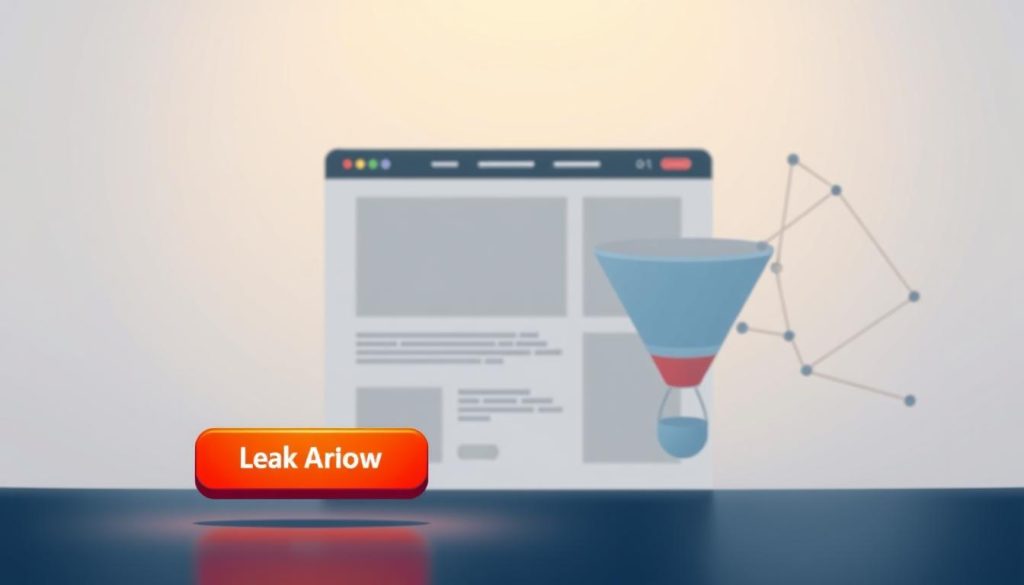
Form Optimization Techniques
Form optimization is a delicate balance between gathering sufficient lead data and minimizing friction. We achieve this by using techniques such as progressive profiling, where we gradually ask for more information as the lead progresses through the funnel.
Some effective form optimization techniques include:
- Using multi-step forms to reduce the perceived effort required.
- Implementing smart forms that remember returning visitors.
- Providing real-time feedback through field validation to reduce submission errors.
By implementing these strategies, we can optimize our content for lead conversion, ultimately driving more sales and revenue for our business.
Content Distribution Channels for Maximum Lead Generation
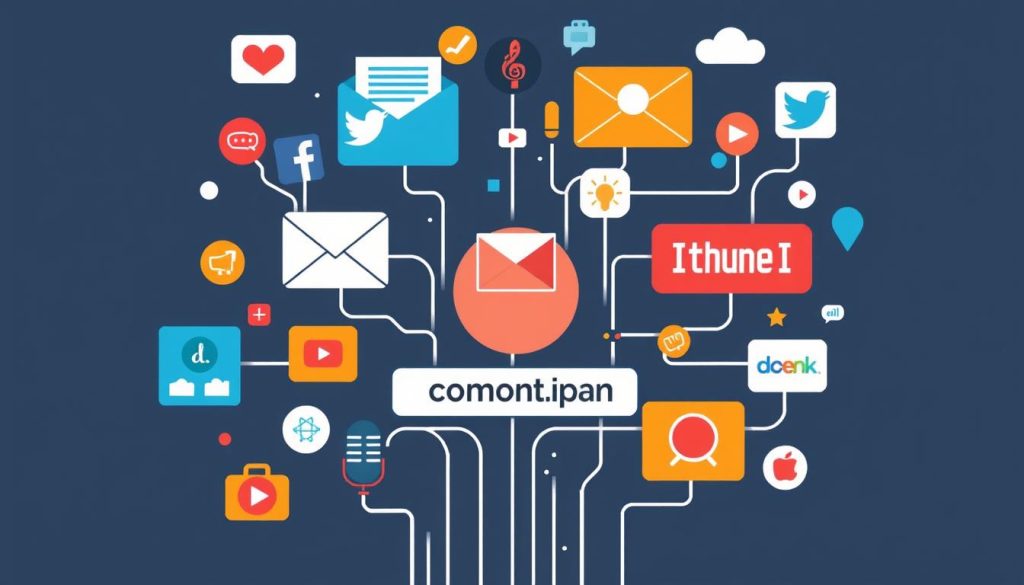
The success of your lead generation strategy heavily relies on how well you distribute your content. To get your content to as many interested people as possible, you need to do more than just SEO.
SEO Strategies for Content Visibility
We optimize our content for search engines to increase visibility and drive organic traffic. By understanding search intent and using relevant keywords, we can improve our content’s ranking and attract more leads.
Social Media Distribution Tactics
Social media platforms are crucial for content distribution. We use tactics like sponsored content and promoted social posts to reach targeted audiences and drive traffic to our content.
Email Marketing Integration
Email marketing is a powerful tool for lead generation. By integrating our content into email campaigns, we can nurture leads and guide them through the sales funnel.
Paid Promotion Strategies
Paid promotion amplifies our highest-converting content to targeted audiences. We use content-focused paid strategies like sponsored content, native advertising, and retargeting campaigns to generate high-quality leads.
- Paid search campaigns targeting high-intent keywords capture prospects actively seeking solutions.
- Sponsored content in industry publications provides access to pre-qualified audiences.
- The most effective paid promotion strategies use content as the value delivery mechanism.
Lead Qualification and Nurturing Through Content
Qualifying and nurturing leads through targeted content is essential for successful lead generation. We recognize that not all leads are ready to make a purchase immediately; 50% of qualified leads aren’t ready to purchase at first contact. Our content strategy provides the roadmap to guide these leads through the sales funnel.

Identifying Marketing Qualified Leads (MQLs)
To effectively nurture leads, we first need to identify Marketing Qualified Leads (MQLs). MQLs are leads that have shown interest in our content and have the potential to become customers. This identification process involves analyzing engagement metrics, such as content downloads, webinar attendance, and email interactions.
Content Segmentation for Lead Nurturing
Content segmentation is crucial for lead nurturing. By tailoring our content to specific segments of our audience, we can address their unique needs and concerns, moving them closer to a sales conversion. This involves creating content that resonates with different stages of the buyer’s journey.
Moving Leads Through the Sales Funnel
Moving leads through the funnel requires strategically sequenced content. We use trigger-based content delivery to respond to specific lead actions, creating timely and relevant nurturing. Our sales enablement content equips our sales team to continue the conversation started by marketing, ensuring a consistent experience as leads transition between departments.
| Stage | Content Type | Goal |
|---|---|---|
| Top of Funnel | Educational Blog Posts | Awareness |
| Middle of Funnel | Case Studies, Webinars | Consideration |
| Bottom of Funnel | Product Demos, Trials | Conversion |
Measuring Content Marketing Lead Generation Success
Measuring the success of your content marketing lead generation campaigns is vital for optimizing your strategy. To achieve this, you need to track the right metrics and utilize the appropriate tools.
Lead generation, especially in B2B, is a long game. It’s essential not to be discouraged if your campaigns don’t perform well initially. Instead, learn from your engagement data and any anecdotal evidence, refine your approach, and try again.
Key Performance Indicators (KPIs) to Track
To measure the success of your content marketing lead generation efforts, you need to identify and track relevant KPIs. A comprehensive measurement stack that combines analytics platforms, marketing automation, CRM systems, and specialized content tools provides a complete performance picture.
- Google Analytics remains crucial for tracking traffic sources, user behavior, and conversion paths.
- Marketing automation platforms offer visibility into email engagement, lead scoring, and nurturing sequence performance.
- CRM integration enables closed-loop reporting that tracks content-sourced leads through the entire sales process to revenue generation.
Tools for Measuring Content Performance
Investing in the right tools for lead generation is crucial. Interactive content platforms, for instance, can save time and provide deep insights into viewer behavior.
Some essential tools include:
- Heat mapping and user recording tools to reveal how visitors engage with your content.
- Content-specific analytics platforms to gain insights into document engagement and video viewing patterns.
- Dashboard tools that combine data from multiple sources to create accessible visualizations.
By leveraging these tools and tracking the right KPIs, you can refine your content marketing strategy and improve lead generation outcomes.
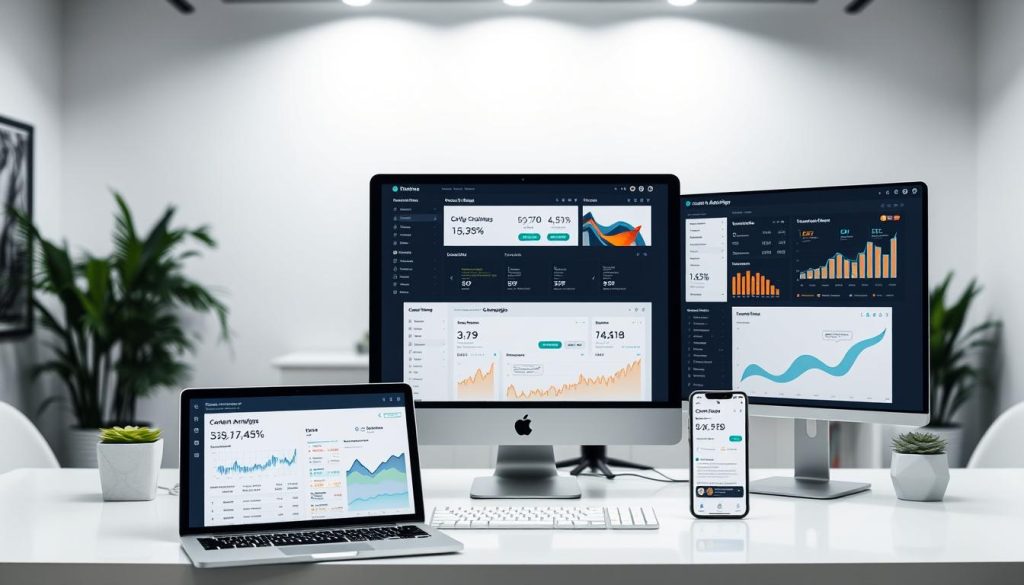
Advanced Content Marketing Lead Generation Techniques
The next level of lead generation involves adopting sophisticated content marketing techniques that drive real results. As our lead generation process matures, so do our revenues. We’ve established how to structure our lead generation funnel, build buyer personas, and create the right content. Now, it’s time to reach our audience effectively with our lead generation system.
To achieve this, we need to focus on advanced strategies that can elevate our content marketing efforts. This includes leveraging personalization, creating interactive content, and utilizing AI and automation in our lead generation processes.
Personalization Strategies
Personalization is key to capturing the attention of potential leads. By tailoring our content to the specific needs and interests of our audience, we can significantly improve engagement. This can be achieved through data-driven insights that help us understand our audience better.
Interactive Content Approaches
Interactive content, such as quizzes, polls, and interactive videos, can enhance user experience and encourage active participation. This not only increases engagement but also provides valuable data on our leads.
AI and Automation in Lead Generation
AI-powered tools and automation can revolutionize our lead generation efforts. For instance, AI-powered content creation tools can scale production while maintaining quality. Predictive analytics can identify high-potential leads based on behavioral patterns, allowing for more targeted content delivery.
| Technique | Description | Benefit |
|---|---|---|
| AI-powered Content Creation | Scales content production while maintaining quality | Comprehensive coverage of relevant topics |
| Predictive Analytics | Identifies high-potential leads based on behavior | Targeted content delivery to likely converters |
| Chatbots and Conversational Marketing | Creates interactive lead qualification experiences | Captures information while providing value |
By incorporating these advanced techniques into our content marketing strategy, we can significantly enhance our lead generation efforts. It’s about combining technological capabilities with human strategic oversight to maintain our brand voice and ensure relevance.
Conclusion: Building a Sustainable Lead Generation Engine
Building a sustainable lead generation engine through content marketing requires a multifaceted strategy. To achieve this, we must view content marketing as an ongoing system rather than isolated campaigns. This approach allows us to balance short-term conversion goals with long-term brand building.
By continuously optimizing our content based on performance data and ensuring cross-functional alignment between marketing, sales, and customer success, we create a seamless experience that nurtures leads into loyal customers. Investing in evergreen content assets generates compounding returns on our marketing investment, driving business growth.
